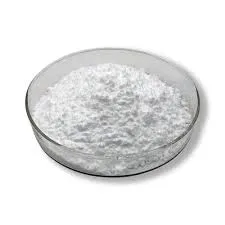
Lis . 02, 2024 14:31 Back to list
hydroxypropyl methylcellulose uses in tablets
Hydroxypropyl Methylcellulose A Versatile Excipient in Tablet Formulations
Hydroxypropyl methylcellulose (HPMC) is a widely used polymer in the pharmaceutical industry, particularly in the formulation of tablet dosage forms
. This semi-synthetic compound, derived from cellulose, is highly favored for its unique properties that enhance both the manufacturing process and the therapeutic effectiveness of the final product.One of the primary uses of HPMC in tablets is as a binder. In tablet formulations, a binder is crucial for ensuring that the active pharmaceutical ingredients (APIs) adhere together, maintaining the structural integrity of the tablet during handling and storage. HPMC has excellent binding properties and can produce tablets with good mechanical strength, making it an ideal candidate for direct compression processes. Additionally, its solubility in both cold water and organic solvents provides formulators with flexibility in designing tablets that require specific dissolution profiles.
Another essential application of HPMC is its role as a controlled-release agent. By modifying the viscosity of the HPMC used, formulators can tailor the release rate of the drug within the gastrointestinal tract. This characteristic is particularly beneficial for oral solid dosage forms, where achieving a controlled release can enhance bioavailability and minimize side effects. For instance, HPMC forms a gel-like matrix when it comes into contact with water, allowing drugs to be released slowly over time. This makes HPMC an excellent choice for sustained-release formulations, providing patients with more consistent therapeutic effects.
hydroxypropyl methylcellulose uses in tablets

Moreover, HPMC acts as a coating agent for tablets. Enteric coating is an essential feature for many formulations to protect sensitive APIs from the acidic environment of the stomach. HPMC can be used to create a film that is stable in acidic conditions but dissolves in the alkaline environment of the intestines, ensuring that the drug is released at the desired site of action. This property not only enhances medication efficacy but also improves patient compliance by reducing gastrointestinal side effects.
In addition to these applications, HPMC also enhances the tablet manufacturing process itself. It can improve the flowability of powders during the blending stage, allowing for a more uniform distribution of the active ingredients and excipients. This is particularly important for large-scale production, where consistency and quality are paramount.
In conclusion, hydroxypropyl methylcellulose is a multifunctional excipient that plays a critical role in the development and production of pharmaceutical tablets. Its properties as a binder, controlled-release agent, coating material, and flavor enhancer contribute to the overall effectiveness and patient acceptability of the final dosage forms. As the pharmaceutical industry continues to advance, HPMC will remain an essential component in the formulation of innovative and efficient medicines.
-
Unlocking the Benefits of HPMC Products: A Gateway to Versatile Applications
NewsAug.07,2025
-
Unleashing the Potential of HPMC Ashland: A Comprehensive Look
NewsAug.07,2025
-
Tile Bonding Cellulose: The Key to Superior Adhesion and Durability
NewsAug.07,2025
-
Hydroxypropyl Methylcellulose Powder: The Versatile Component in Modern Pharmaceuticals
NewsAug.07,2025
-
Hydroxyethyl Cellulose: The Versatile Solution for Various Industries
NewsAug.07,2025
-
Hydroxyethyl Cellulose (HEC): The Versatile Polymer for Various Applications
NewsAug.07,2025







